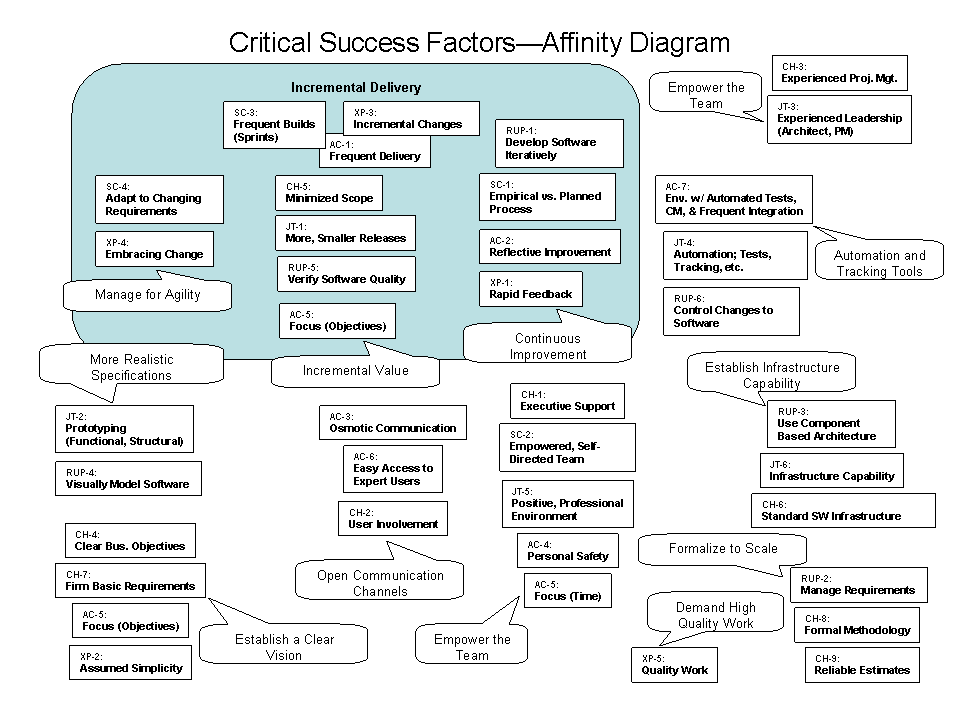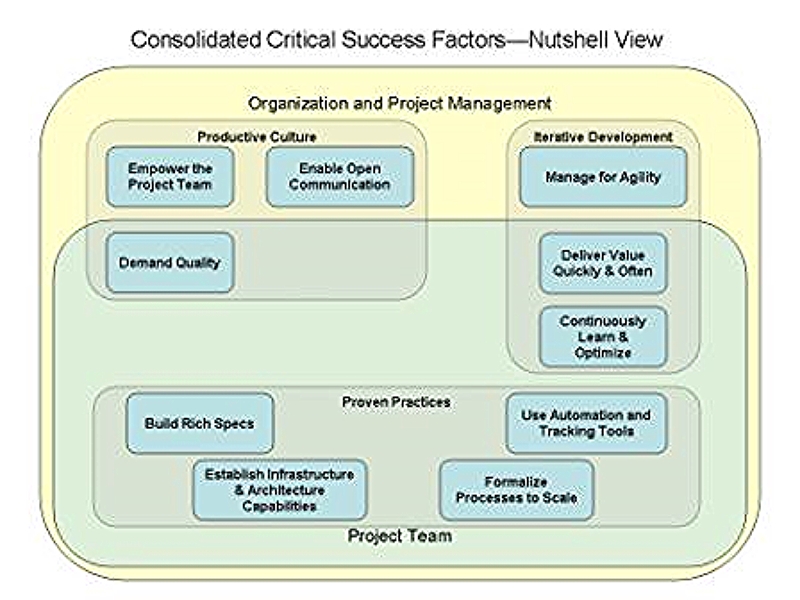About 6 months ago, I started trying to create a set of success factors that were synthesized from the experts. I have since completely revamped my thoughts. What I ultimately want, for my own purposes, is a "Reference Model" (e.g. the OSI 7-Layer Model) that provides some structure with which I can I can think and talk about the various factors that lead to success--independent of any specific methodologies. I hope to be able to say things like "Reflection Workshops in Crystal are one technique to Continuously Learn and Optimize," or "XP provides a system for Iterative Development and Proven Practices, focused on smaller Project Teams."
I have now spent some more time thinking, and included some more popular, respected sources. The following slide is my Reference Model, a 30,000 ft. view of software success.
In future posts, I will provide more details on the individual success factors and how they relate to the work of industry luminaries. So, how did I arrive at this model? I started by taking the most important, highest-level principles and factors from the following excellent resources:
- The Standish Group's CHAOS study [CH1..9]
- The Unified Process or RUP [RUP-1..6]
- The SCRUM meta-process (web, book) [SC-1..4]
- Alistair Cockburn and Crystal methods (web, book, book) [AC-1..7]
- eXtreme Programming (web, web, book) [XP-1..5]
- My own experience on dozens of successful projects [JT-1..6]

Comments are most welcome.
